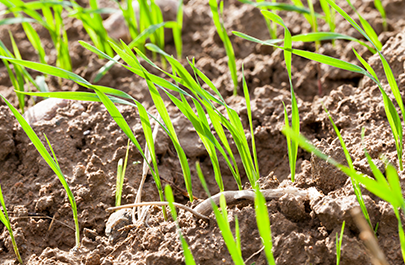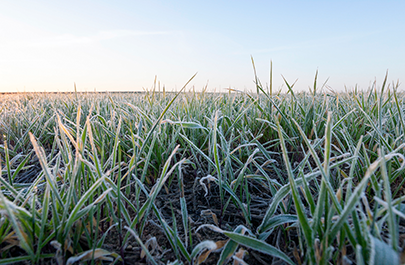Vielen Dank!
Wir haben Ihre Registrierungsanfrage erhalten und senden Ihnen in Kürze eine E-Mail zur Bestätigung Ihrer E-Mail-Adresse.
Schließen Sie bitte die Registrierung ab, indem Sie auf den Link in dieser E-Mail klicken.
Datenschutzrichtlinien
Administrator Ihrer persönlichen Daten ist die LAT Nitrogen Austria GmbH, (gdpr@lat-nitrogen.com). Genaue Informationen zur Verarbeitung Ihrer persönlichen Daten finden Sie in unseren Datenschutzrichtlinien. Diese Informationen senden wir Ihnen darüber hinaus in der Bestätigungs-E-Mail zu Ihrem Newsletter-Abonnement.
Bitte bestätigen Sie, dass Sie die Datenschutzrichtlinien gelesen haben, sowie die allgemeinen Nutzungsbedingungen und diese zustimmend zur Kenntnis nehmen, bevor Sie fortfahren.
Womit können wir Ihnen sonst noch helfen?
Wir würden Ihnen gerne Informationen zu unseren Top-Angeboten, neuesten Produkten und Dienstleistungen per E-Mail zusenden. Wir werden Ihre persönlichen Daten sorgfältig behandeln. Wir werden Ihre Daten niemals an Dritte verkaufen. Indem Sie folgende Kästchen aktivieren, stimmen Sie dem Erhalt von Marketing-Mitteilungen der LAT Nitrogen Austria GmbH zu.
Sie können Ihre Meinung jederzeit ändern. Klicken Sie dazu auf den Abmelde-Link in der Fußzeile einer unserer E-Mails oder schreiben Sie uns an gdpr@lat-nitrogen.com.
Vielen Dank!
Wir haben Ihre Registrierungsanfrage erhalten und senden Ihnen in Kürze eine E-Mail zur Bestätigung Ihrer E-Mail-Adresse.
Schließen Sie bitte die Registrierung ab, indem Sie auf den Link in dieser E-Mail klicken.
Registrierung war nicht erfolgreich.
Ihre E-Mail-Adresse ist bereits registriert
oder es ist ein Serverfehler aufgetreten.







(Einheit/t der Produktion)
(Einheit/t der Produktion)
N
18
15
Sehr empfindlich
P2O5
7
6.5
Sehr empfindlich
K2O
12
5.5
Empfindlich
MgO
1.6
1.3
Empfindlich
SO3
3.5
2.9
Empfindlich
TE
Mangan (Mn) bei Bedarf 500 g/ha
Die Stickstoffmenge zu Wintergerste wird in 2, meist aber in 3 Gaben im Frühjahr ausgebracht, um eine gezielte und bedarfsgerechte Versorgung zu gewährleisten und Stickstoff- bzw. Ertragsverluste zu vermeiden. Mancherorts kann bereits eine Herbstdüngung notwendig sein.
Wintergerste bildet den Ertrag durch eine entsprechend üppige Bestockung im Herbst. Diese ist bei zweizeiligen Sorten besonders wichtig. Bis zu 50% des späteren Kornertrages hängen davon ab. Mehrzeilige Gersten können über die Einzelähre noch viel an Ertrag kompensieren.
Die Ertragsparameter der W-Gerste
• Ähren/m²
• Körner/Ähre
• Korngewicht (TKG)
Herbstapplikation

Erste Applikation Frühjahr

Zweite Applikation Frühjahr

Dritte Applikation Frühjahr

Herbstdüngung – stark abhängig von Vorfrucht: Wintergerste braucht einen Teil ihrer Nährstoffe bereits im Herbst. Dabei kann die Stickstoffnachlieferung aus der Mineralisation des Bodens ausreichen. Die Wirkung von Vorfrüchten wie Soja oder Raps oder der Einsatz von geringen Mengen an Wirtschaftsdüngern unterstützen diesen Bedarf zusätzlich. Sind diese Nachlieferungsquellen nicht vorhanden oder muss erst Stroh der Vorfrucht verrotten, kann eine kleine Düngergabe (30 kg N/ha) von Vorteil sein. Für die geforderte Herbstentwicklung ist weniger die Saatstärke, sondern der optimale Saattermin und eine nicht zu knappe Stickstoffversorgung relevant.
Finden Sie mit NutriGuide® den besten Dünger für Ihre Bedingungen.
Erste Gabe im Frühjahr zum Vegetationsbeginn: Die erste Frühjahrsgabe ist im Normalfall die wichtigste Düngegabe und sollte ehestmöglich im Frühjahr stattfinden, um eine volle Ertragsrelevanz zu erreichen. Mengenmäßig sind hier 50 – 80 kg N/ha angemessen. Bei zweizeiligen Sorten ist diese Gabe mehr zu betonen als bei mehrzeiligen, um die Bestandesdichte und die Anzahl der ährentragenden Halme zu maximieren (Bestandesdichte-Typ). Schwächere Bestände müssen durch entsprechende Düngung besonders gestärkt werden. Nur überdurchschnittliche Bestände, entsprechend gute Vorfrüchte mit rascher Umsetzung im Frühjahr oder mehrzeilige Sorten rechtfertigen eine verzögerte oder mengenmäßig reduzierte Andüngung. Bei Brausorten wird besonders diese Gabe betont, sie fällt dann entsprechend höher (70 – 90 kg N/ha) aus.
Finden Sie mit NutriGuide® den besten Dünger für Ihre Bedingungen.
Gabe zu Beginn Schossen: Abgestimmt auf die erste Gabe und die bisherige Bestandesentwicklung wird die zweite Gabe in ihrer Menge (40 – 60 kg N/ha) bemessen. Sie fällt bei mehrzeiligen Sorten höher aus, da diese einen beachtlichen Teil des Ertrages über die Entwicklung der einzelnen Ähre bildet (Kompensations- bzw. Einzelährentyp). Die Düngung erfolgt ca. 4 Wochen nach der ersten Frühjahrsgabe zum Beginn des Längenwachstums (Beginn Langtag Ende März) im EC 30 – 31 (Schossen). Bei Braugerstensorten wird diese Gabe reduziert, um den Proteingehalt am Ende nicht unnötig hoch zu halten.
Finden Sie mit NutriGuide® den besten Dünger für Ihre Bedingungen.
Gabe im Fahnenblattstadium: Um die Kornfüllung zu optimieren und die Proteinbildung zu erhöhen, kann besonders bei mehrzeiligen Futtergersten-Sorten eine zusätzliche Gabe von 30 – 40 kg N relevant sind. Bei Braugersten darf diese Düngegabe keinesfalls erfolgen, sie würde die Braueignung durch hohe Proteingehalte gefährden.
Finden Sie mit NutriGuide® den besten Dünger für Ihre Bedingungen.
LAT Nitrogen Austria GmbH
St.-Peter-Straße 25
4021 Linz, Österreich